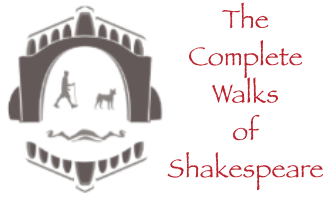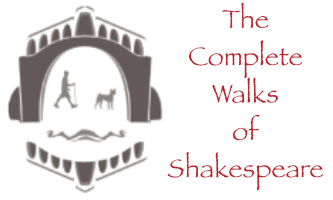Henry IV pt 1
Act 2 Sc 4
The Boar’s-Head Tavern, Eastcheap
Wilt thou rob this leathern jerkin, crystal-button, not-pated, agate-ring, puke-stocking, caddis-garter, smooth-tongue, Spanish-pouch
-Prince Henry
Junction of Cannon Street and King William Street, London
Background - “What is past is prologue”
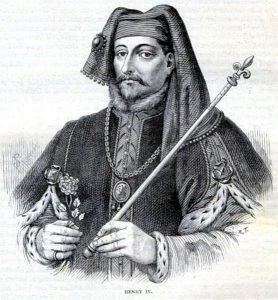 HENRY IV PT 1
HENRY IV PT 1
Believed to have been written in 1596 or 1597, this is Shakespeare’s 15th play. It’s partly based on the anonymous work The Famous Victories of Henry V, first entered in the Stationers’ Register a few years earlier.
The previous play in the sequence, Richard II, ended in 1399 with Richard’s death. However, in Henry IV Shakespeare makes us believe that a much shorter time has elapsed so that he doesn’t have to explain what’s been happening in the meantime. I suppose.
The action spans 10 months between one battle and another. It opens in 1402 after the Battle of Homildon, which was fought on September 14th and is referred to in the text, and closes just after the Battle of Shrewsbury on July 21st the following year.
The story is the rebellion against Henry IV by the legendary knight Harry Hotspur and his allies, and the rise of Prince Harry from an irresponsible, partying, immature lad to the battle-hardened, heroic future Henry V.
It also introduces us to the rotund, vain and boozy, but eternally endearing Falstaff, who Shakespeare originally called Sir John Oldcastle. However, he changed the name before registering the play in case Oldcastle’s descendants objected to how he was portrayed. Look closely and you’ll see that it remains in a reference to ‘my old lad of the castle’ in Act I Scene 2.
On the Stage - “The play’s the thing…”
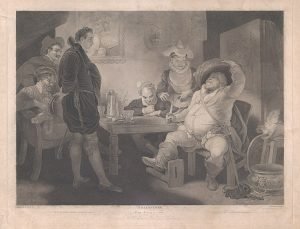 2:4 THE BOAR’S HEAD TAVERN, EASTCHEAP
2:4 THE BOAR’S HEAD TAVERN, EASTCHEAP
Prince Harry and Poins are at the tavern when Falstaff and the other robbers arrive hot from the mischief at Gadshill in Act II Scene 2.
Encouraged by Harry, Falstaff gives a boastful and spurious account of how they were set upon and robbed by some fifty attackers of which he fought eleven and killed at least seven.
News comes of Hotspur’s rebellion and Harry and Falstaff role-play imagined scenes between Harry’s father, Henry IV, and Harry himself. During this there emerge the first hints that there will eventually be a separation of the ways between them.
When the authorities arrive Harry saves Falstaff from arrest for the robbery by hiding him behind an arras (a wall hanging concealing an alcove) where he falls asleep.
Before the scene ends Harry vows to repay the merchants they robbed and to get Falstaff a commission in the Royal army.
On the Map - “Presume not that I am the thing I was”

The Boar’s Head stood just where the Yellow Box junction is.
WILLIAM STREET AND CANNON STREET JUNCTION, LONDON
Although there is no evidence to suggest that the Boar’s Head existed in Henry’s time, it was certainly there in Shakespeare’s.
However, he never mentions it by name.
In the edition of his plays published by the editor Alexander Pope in 1725 the setting is identified as The Tavern in East-cheap.
That relates to the text in the sense of Eastcheap being a questionable playground for a royal prince and is mentioned twice as such in the scene.
But by the time of the edition published by Lewis Theobald eight years later, the setting had become Boar’s-head Tavern in East-cheap.
With this in mind it’s worth noting that the famed Boar’s Head which then stood at the top of William Street at the junction with Cannon Street in Eastcheap was described modestly beneath its sign with the words “This is the chief Tavern in London” . So Theobald’s addition may have been nothing more than an inn joke with his readers…
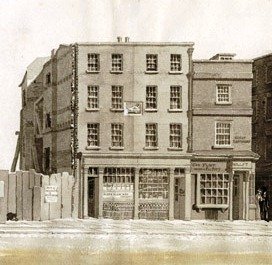
The Boar’s Head, demolished in about 1830.
True or not, it didn’t stop the writer of the comic play She Stoops to Conquer, Oliver Goldsmith, believing he was sitting by the fire enjoyed by Falstaff and in the chair favoured by Prince Harry when he visited the tavern in 1760.
Today the busy junction is not the place to go for a walk and enjoy it.
The original inn burned down during the Great Fire of London in 1666. It was then rebuilt, remaining on the site until the new London Bridge was being constructed in the early 19th century when it was knocked down to improve the approach to the bridge.
The inn’s sign survived the demolition and is presently on display at the Globe Theatre. If you want to see it, walk down to London Bridge and then west along Hanseatic Walk to Southwark Bridge. Cross the Thames and head further west to the Globe.
The inn itself is commemorated in the decoration of a nearby building, a former vinegar warehouse, built in 1868 at 33-35 Eastcheap. It bears a carving of a boar’s head.
Why let historical facts spoil a good story? After all, Shakespeare didn’t.
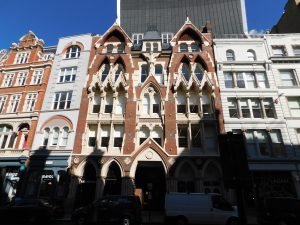
The former vinegar warehouse at 33-35 Eastcheap
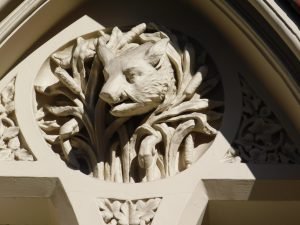
Detail, 33-35 Eastcheap

The Boar’s Head sign (or shrine?) at the Globe Theatre, London.
